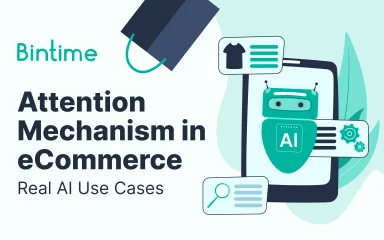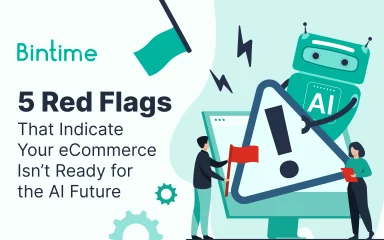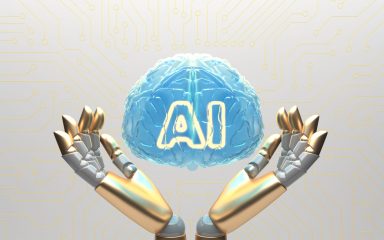This month, something we had dreamed about for nearly two years finally happened – Bintime held its first AI Lab Day. What began as a small internal initiative evolved into a full-on learning journey, with our developers, tech leads, and even our CEO rolling up their sleeves to understand, experiment with, and build AI agents from scratch.
And while we thought two hours would be enough for a simple demo session, it turned into something much bigger: a live exploration of the future of software development, with more questions than we had time to answer – and that’s exactly how it should be.
From Skepticism to Strategy: CEO’s Personal AI Journey
Our CEO, Serhii Shvets, opened the event with a story that resonated with many of us. Like many experienced tech leaders, he once viewed AI as “just another hype cycle.” But the rapid rise of LLMs (large language models), the explosion of tooling, and the sheer velocity of innovation prompted a change.
“Two years ago, I realized that if we don’t get into this, as a company and as individuals, we’ll be left behind. AI is becoming a new layer of software engineering. We either learn to build with it, or someone else will.”
That shift in mindset is what led to the birth of AI Lab at Bintime, where a dedicated group of engineers and team leaders took on a structured multi-month learning track in AI systems. The goal? Not just to play with prompts – but to build working AI agents.
So… What Is an AI Agent?
One of the biggest takeaways from AI Lab Day was clarifying what AI agents really are – and what they’re not.
“An AI agent is not just a fancy chatbot,” Serhii explained. “It’s a system that can reason, remember, and act autonomously toward a specific goal.”
AI agents are built on top of LLMs but include memory, task logic, context awareness, and often the ability to trigger real actions – whether that’s querying data, updating systems, or communicating across tools.
The group explored foundational concepts like:
- Vector embeddings and how LLMs “understand” meaning
- Semantic search as a basis for contextual awareness
- Prompt engineering vs. true autonomy
- The limitations of current LLMs, especially with long codebases and legacy systems
- How AI models hallucinate, and how that affects trust and validation
While the first session didn’t include full demos, it laid the groundwork for agent design and gave attendees a clear conceptual map of how AI tools move beyond prompt-response logic.
Real Developer Questions, Real Developer Problems
What set this event apart was the depth of the questions from the audience. This wasn’t just passive listening – it was an active, thoughtful exploration of the practical challenges we all face when integrating AI into real software projects.
Some of the standout developer questions included:
- “Can we fine-tune an assistant on our specific codebase and coding style?”
- “How do we test outputs when results vary every time?”
- “What’s the best way to structure prompts for repeatability?”
- “How do agents deal with legacy code and modular dependencies?”
- “If LLMs generate different answers each time, how do we validate them reliably?”
The answers sparked lively discussion. For example, testing LLM outputs often requires probabilistic validation or second-level AI agents to critique and score outputs. And until context windows grow large enough to handle full codebases, modular design and task-specific agents are the most reliable way forward.
Fine-Tuning, Adaptation, and the Future of Dev Work
Another major concept covered was fine-tuning – training a base model with domain-specific data to improve its accuracy and usefulness. For example, in an e-commerce context, fine-tuning on product manuals, category structures, or client-specific logic can produce agents that “know” the space deeply without reloading context every time.
We also touched on the difference between stateless models and models that can retain memory, which is especially relevant when building AI agents that need to reason across multiple steps or maintain awareness over time.
As Serhii put it:
“The more your agent understands context, the more useful it becomes. But that context can’t always be passed in a single prompt. That’s where memory, embedding-based retrieval, and fine-tuning all come into play.”
What’s Next for Bintime AI?
AI Lab Day was never meant to be a one-off event. It’s the beginning of something bigger. Some of the AI prototypes are already being tested in real production workflows. Others are still under development – or being refined after feedback.
The next event will focus on giving the floor to the developers themselves, showcasing what they built, how they approached it, and what surprised them most in the process.
We’ll be back soon with stories of:
- Search agents
- Automated data labelers
- Code analyzers
- And maybe even a few surprises
Final Thoughts
AI is not replacing developers – it’s augmenting them. It’s a new kind of collaborator. One that needs clear direction, validation, and thoughtful integration.
But at Bintime, we’re not waiting for some perfect, ready-made AI solution to arrive. We’re building the future we want to work in. And this was just Day One.











